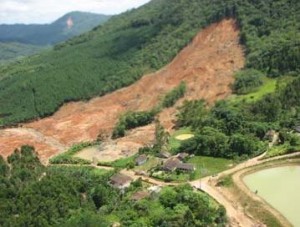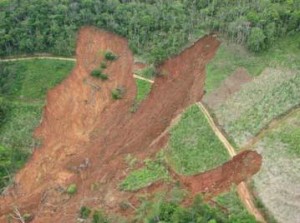Activity of Member
Brazilian Geotechnical Society
![]() Between 20th and 23rd of November of 2008 one of the most beautiful area of the Brazilian State of Santa Catarina, with more than 1 million inhabitants, was devastated by a heavy rain, which occurred after almost three months of continuum precipitation, and induced not only a great flood but also caused more the 4000 slope failures. With 135 fatal victims and more than 78000 unsheltered people the disaster induced a great mobilization of the geotechnical community headed by the Brazilian Society for Soil Mechanics and Geotechnical Engineering (ABMS). It was organized a voluntary force formed by twenty ABMS members to help the Emergency Response Team during the emergency period.
Between 20th and 23rd of November of 2008 one of the most beautiful area of the Brazilian State of Santa Catarina, with more than 1 million inhabitants, was devastated by a heavy rain, which occurred after almost three months of continuum precipitation, and induced not only a great flood but also caused more the 4000 slope failures. With 135 fatal victims and more than 78000 unsheltered people the disaster induced a great mobilization of the geotechnical community headed by the Brazilian Society for Soil Mechanics and Geotechnical Engineering (ABMS). It was organized a voluntary force formed by twenty ABMS members to help the Emergency Response Team during the emergency period.
The main cause of the slope failures were a combination of long term low intensity rain followed by a heavy rain. The soil thickness in the region is of more than 6 meters in many slopes, having potentially a great volume of soil to fail. The slope failures occurred not only in urban areas but also in rural areas destroying most of the infrastructure and affecting a great number of houses in the rural and urban area. Some of the failures involved tens of thousands of tons of soil in failures that in most cases were transformed in debris flows.

Differently of other regions of Brazil the local governments were not prepared for this kind of disaster which created a great mobilization of the society helping in many ways. The role of the geotechnical engineers together with other specialists was, immediately after the events, to evaluate potential risk of new failures. These evaluations allowed the return of some that still had their houses standing or determine the removal of others from their homes due to continuing risk of failure. Another important and dramatic duty of the geotechnical engineers was to help to evaluate the risk of the rescue personel involved in rescuing buried bodies from the debris.

With many areas under critical conditions, more rain can cause more failures with some people still under risk. ABMS is working with its members in order to suggest measures to minimize the risk for the population and also to suggest long term measures such as to install monitoring system to anticipate potential problems. Another important measure that has been suggested by ABMS is to take educational actions to teach the population the phenomena involved in this kind of event and in this way minimize inadequate naive anthropic action.
The work performed by the Brazilian geotechnical community in this event, has been a humanitarian action that gave those who had the opportunity to participate a significant benefit, well beyond the technical efficiency.
Reported by Fernando Marinho, Andreia Dyminsky, Edgar Odebrecht and Luiz Bressani.




































